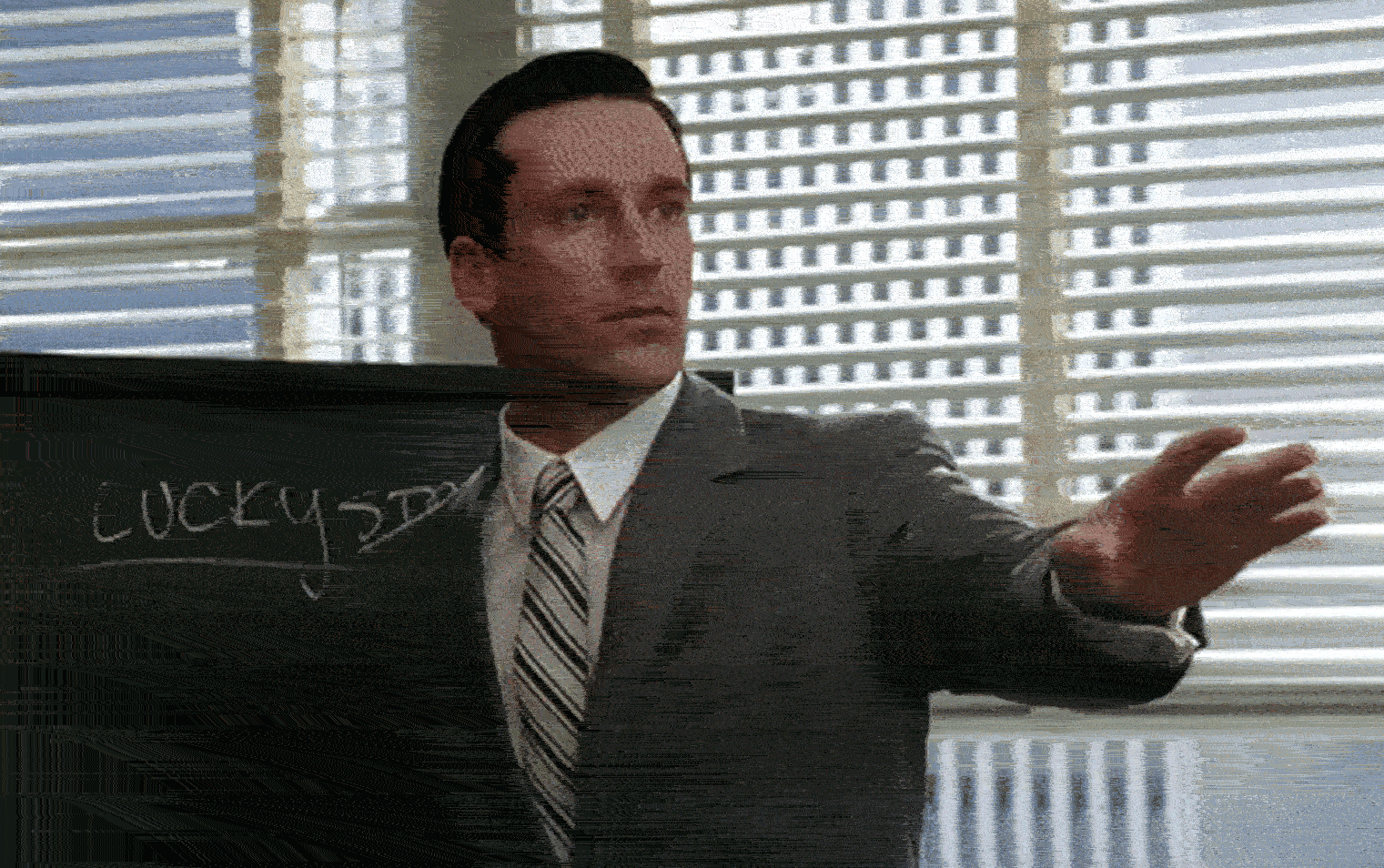
Advertising is all about telling a compelling story quickly. The best commercials grab the audience’s attention immediately and linger in their memories long after the promos have ended. For creatives applying for jobs in advertising, the same rule applies. A great portfolio should grab the hiring manager’s attention quickly, keep her interest, and make her want to learn more.
But how can creatives best position their portfolios to get (and keep) the interest of hiring managers? We asked ten hiring managers and recruiters what they look for in a portfolio and how applicants can make their work stand out.
Time is of the essence
It’s crucial to understand just how little time you have to make an impression. The hiring managers we spoke to can tell within a matter of seconds whether they’re interested in a candidate’s portfolio. If they are, they might spend fifteen to twenty minutes pouring over your work — but the first few seconds are essential.
“I spend about five to twenty seconds deciding whether to look more closely at a portfolio,” says Lauren Ranke, director of creative recruiting at Wieden+Kennedy. “That’s how long it takes to determine if I’m intrigued or not. And if I’m intrigued, I’ll spend more time looking at your work.”
Many hiring managers aren’t watching your entire reel or looking at every clip in your portfolio, so it’s important to put your strongest work front and center. “I don’t have a ton of time to spend watching reels,” explains Jim Bell, creative director at Forge. “So, to stand out, put your best thinking in front of me right when I get to your site.” When working on your reel or choosing clips for your portfolio, Bell recommends including work that gets to the point quickly. If your video takes a minute or two to build, you’ll likely lose his attention.
Keep it simple
Fortunately, there’s an easy way to get on a hiring manager’s good side quickly: Just keep it simple. Currently, clean, simple design is in vogue. While your work and personality should stand out, your portfolio formatting shouldn’t be distracting. “Formatting is as important as content,” says Susanna Leighton, director of creative services at Team One. “Hiring managers get frustrated with really complicated portfolios. We just don’t have time to figure it out.”
Ara Vallaster, talent acquisition director at Swift, agrees. “Even if there's gems in there, sometimes that doesn't even matter if the landing page isn't well laid out,” she explains. “If I really have to start digging around to see if there's any good nuggets in there, I will spend less time on it and move on quicker.”
“The style right now is very simple and minimalistic,” says Laura Laser, president of recruiting firm Laser Talent Group. Laser recalls the old days before the rise of easy website templating, when creatives would hire web designers to create unique but often difficult-to-navigate websites. Now, she says, “people tend to use templates and keep things very simple and easy to navigate.”
Who are you even?
Of course, once you have a beautiful portfolio template laid out, the challenge is choosing which work to include. Should you include as many projects as possible? Or show a range of skills or emphasize your specialties?
Not surprisingly, this is where hiring managers differ in their preferences. Managers at agencies that specialize in a specific type of content prefer seeing portfolios that align well with their specialty. “We have a high aesthetic for the work we do, so not everyone is right for this company,” explains Janet Wood, senior HR director at Designory. “They might be talented and be right for a different agency, but we’re looking for a very specific type of work.”
Like Designory, Team One works primarily with high-end clients who target affluent consumers, so they seek out portfolios that show a high level of design and are very polished. Leighton specifically looks for work that is “beautifully lit, beautifully articulated, full of craft and design aesthetic” and wants to see that applicants have worked with luxury brands. For her, stand-out portfolios feature work that makes her jealous. She loves when she sees a project in a portfolio and wishes Team One had made something like it.

Hiring managers at less specialized agencies, meanwhile, tend to be more open to different types of work — as long as they showcase your talent and, especially, your personality. “For us, it’s all about having range,” explains Michael Ancevic, managing partner and chief creative officer at The Fantastical. He’s looking for creatives who can “tell compelling stories in various lengths, in various mediums,” and who can move fluidly from funny, lighthearted work to projects that are more serious in tone.
Trishna Shah, senior recruiter at Big Spaceship, also loves seeing creatives who are multi-talented. “I want to know that you are a team player and that your skills are flexible and varied,” she explains. “I love editors who can animate, producers that can shoot, etcetera.”
Express yourself
Showing who you are is crucial. “In terms of Wieden+Kennedy, we’re looking for creatives who have a unique voice and that express themselves prolifically,” explains Ranke. She loves when portfolios allow a person’s personality to shine through, especially when they showcase skills in unique ways. “Some people will come up who say, ‘I’m going to create an Instagram, and it’s going to show my creative chops in terms of motion design, or I’m going to showcase my animation work or make little cartoons.’ That’s the kind of stuff we love,” she says.
“If you are going to go through the effort, make sure it breaks through on all levels.”
But Ranke also emphasizes the importance of fully committing to out-of-the-box projects. “It’s a bummer when people create projects like that, but only make two or three posts,” she explains. “If I click on it and there’s between twenty and forty posts, now we’re onto something. It shows you’re working hard and that you have muscle.”
Ancevic also emphasizes the importance of good execution. Taking a creative approach to a portfolio or application might be attention-grabbing, but the work itself still needs to be strong. “I had one person go old school and send us a box that had work examples in it, which was, in some ways, a fresh approach these days because everything is digital, but the work wasn’t that great,” he recalls. “If you are going to go through the effort, make sure it breaks through on all levels.”
Similarly, Jeroen Bours, founder of boutique agency Darling, notes that agencies are looking for strong execution but are equally interested in strong ideas. “Don’t confuse beautiful executions with a good idea,” he says. “Agencies see right through a bad idea executed beautifully versus a great idea executed poorly.”
Always be curating
The most tenuous balancing act when it comes to crafting a portfolio seems to be including just the right amount of information. Too many work samples can make a portfolio seem unfocused and overcrowded, while too few might fail to illustrate your range. Curation and context are the two key ingredients. “Always be curating,” says Vallaster. She recommends including only the work you’re proudest of and always keeping it current since, in advertising, “we’re only as good as what we did last year.”
At the same time, hiring managers want you to know that your work doesn’t always speak for itself. Sometimes providing a write-up about the project, information on the company you worked for, or information about the role you played can be extremely helpful. Bours, for instance, recommends that producers include a few sentences of background information on projects they worked on, including a short synopsis of the challenges they faced and a description of the solutions they found.
“Avoid using work that you did not play a real part in creating or didn’t have a real say in.”
Wood has two specific pet peeves when it comes to the kinds of information people often fail to include in their portfolios. First, she explains, “If I have to look up the company you worked at last because no one’s ever heard of it, you’re already starting to lose me.” She recommends including a half-sentence on what the company does if it’s smaller or lesser known. Second, she’s noticed a trend of including extremely minimal written information on portfolios, which she finds off-putting and a bit egotistical. “There’s a few folks out there that are kind of hot shots and will put the least amount of information on their portfolio, because, basically, their work just speaks for them,” she explains. “So you get these portfolios that just say, ‘I’m a copy writer. Call me.’ Or ‘I’m an editor. Call me.’ And I’m left searching for a resume or more information. I don’t love it.”
Additionally, multiple hiring managers expressed a desire for clarity when it comes to the role you played on a project. If you were an editor, producer, or production assistant, they want to know. And, particularly, they want you to be honest about how big your creative role was. “Avoid using work that you did not play a real part in creating or didn’t have a real say in,” says Joe Masi, CEO of Triptent. “It’s very easy these days to look things up and see who played what role in the creative process. Be sure the work you put out is your own.”
It takes 100 cups of coffee
For recent college graduates or newcomers to the world of advertising, hiring managers want you to know it can take time, networking, and lots of coffee to break in. “Work your network as hard as you can,” recommends Vallaster. “I always say it takes 100 cups of coffee.” Some companies will pass over your portfolio if you haven’t worked with high-profile clients, so it can take patience — and plenty of research — to find the kind of company that might be willing to take a chance on you. But there are plenty of them out there, especially if you have strong spec work, a robust social media following, or impressive personal projects to show.
“For people early in their careers, social media is a great resource,” Laser explains. “You don’t have to make a TV ad to show that you can do great work. Maybe you made a video that went viral. That’s great too.” Creating a popular Instagram series or YouTube video shows hiring managers not only that you can come up with compelling ideas, but that you know how to create work that resonates with an audience.
Creating spec work is also a great idea if you don’t have a lot of experience in advertising. It’s not only a way to beef up your portfolio, but it gives you an opportunity to show off your creativity. “Create work to impress yourself,” recommends Jim Bell in an email. “Too many recent grads think it’s better to show ‘real’ work that they scraped up freelancing or instead of showing spec work. But their spec work goes so much further in showing people how they think and the kind of work they’re passionate about making.”
Finally, don't be lazy. That's the biggest piece of advice Ranke has for newbies. Ranke wants to hire people who take initiative and who make work they're excited about, whether or not it gets them a job. "Get out there and make something every single day," she says. "Take control of your creativity, think about what excites you, and don't wait for someone to discover you. And above all, don't be lazy."






